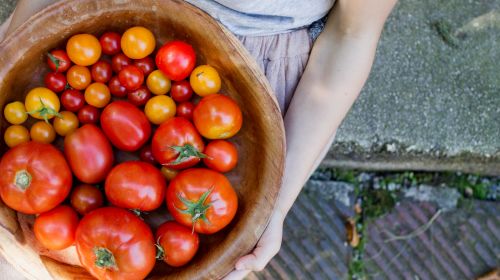The consumption of red wine, cheese or salami can have unpleasant consequences for people with histamine intolerance. After eating, they react with gastrointestinal problems, itching, headaches or tachycardia. How to test for intolerance and which foods are suitable.
- © Getty Images/Natalie McComas
Brief overview: Histamine intolerance
What is histamine intolerance? The clinical picture of histamine intolerance is one of the food intolerances. It is not a true allergy, but many people with histamine sensitivity co-exist with an allergy.
Symptoms: The intolerance reactions are similar to those of an allergy. Headaches, itching or gastrointestinal complaints are common.
Nourishment: After the intolerance has been diagnosed, those affected should eat as little histamine as possible. It is important to keep an eye on the histamine content of food and to avoid foods containing histamine such as tomatoes, citrus fruits, seafood or red wine.
Therapy: In addition to a change in diet, there are drugs with the enzyme diamine oxidase, which the body needs to break down histamine. In acute cases, antihistamines and histamine receptor blockers relieve symptoms.
Article content at a glance:
What is histamine intolerance?
If histamine is ingested through food and the body reacts with physical signs of intolerance, this is referred to as histamine intolerance (histaminosis). The severity of the symptoms is usually linked to the histamine content.
Most foods naturally contain histamine, only a few are completely histamine-free. A particularly large amount of histamine or its precursors are found in foods that have been preserved by yeast cultures or bacteria, such as in long-ripened cheese, sausage or wine, ham or sauerkraut.
What the body needs histamine for
Histamine is an important tissue hormone and belongs to the biogenic amines. The hormone is involved in various bodily functions, for example
- the regulation of blood pressure,
- in digestive processes,
- the immune defense against foreign substances,
- the control of the sleep-wake cycle and
- the regulation of appetite.
In allergic reactions, histamine plays a major role in the human body: If the organism comes into contact with certain allergens such as pollen, animal hair and other substances, large amounts of histamine are released. The consequences are typical allergic symptoms such as itching, watery eyes, a runny nose, redness and wheals. The antihistamines contained in allergy medication suppress the effects of histamine.
Histamine intolerance: what are the typical symptoms?
Some symptoms of histamine intolerance are similar to those of a cold, while others are typical of an allergy. Symptoms usually appear minutes to hours after eating histamine-rich foods.
Main symptoms of histamine intolerance:
Other intolerance reactions can occur:
Very unspecific symptoms such as depressive mood, water retention, joint pain, swollen lips and eyes, tiredness or sleep disorders are also observed. Women with histamine intolerance often suffer from cycle-related headaches and menstrual cramps (dysmenorrhea) because histamine affects the female hormone balance.
Possible causes of intolerance
Normally, the human body can break down histamine without any problems. The two enzymes diaminooxidase (diamine oxidase, DAO) and histamine-N-methyltransferase (HNMT) are responsible for this. In people who suffer from histamine intolerance, the tolerance threshold for histamine is very low. Presumably, the enzyme DAO is not produced in sufficient quantities in their bodies. They may also have restricted enzyme activity.
Reduced enzyme activity can also occur in acute
Gastrointestinal infections come. Also put certain active ingredients in painkillers
medication increased histamine free. These include, for example, active ingredients such as diclofenac and acetylsalicylic acid, but also iodine in X-ray contrast media.
Other biogenic amines such as serotonin or tyramine also require the enzyme diamine oxidase to be broken down in the body. However, these substances are preferentially converted so that DAO is no longer available in sufficient quantities for histamine. Sensitive people can also experience symptoms after eating chocolate, bananas, pineapple, papaya, cashews or walnuts that are rich in serotonin and tyramine.
How is histamine intolerance diagnosed?
The most important step in diagnosing an intolerance is a medical consultation with a thorough collection of the medical history (anamnesis). Allergies, diseases of the digestive tract and the cardiovascular system should also be excluded.
Tests for suspected histamine intolerance
If an intolerance is suspected, a provocation test can be carried out. Patients are given histamine under medical supervision to see if it causes symptoms. Since this provocation test can sometimes lead to violent reactions and even anaphylactic shock, it is only carried out in exceptional cases. Allergy tests should also be used to differentiate between real allergies to certain substances.
Another test is a four-week special diet consisting of histamine-free or low-histamine foods. If the symptoms improve during this time, this speaks for the presence of a histamine intolerance. In addition, the concentration of histamine and DAO can be compared with laboratory tests of the blood at the beginning and after the diet.
Therapy: How is histamine intolerance treated?
By changing your diet to a low-histamine diet, the symptoms of intolerance can be significantly reduced or completely eliminated. If a histamine intolerance is determined, the change in diet should begin with a histamine-free phase for at least two weeks. In the subsequent tolerance phase, you can gradually test individual foods with histamine and the amount that is personally tolerated.
In individual cases, the enzyme DAO can be taken as a medication to break down histamine. Acute symptoms of histamine intolerance are treated with antihistamines and histamine receptor blockers.
What should you avoid if you have histamine intolerance?
In the diet, those affected should avoid histamine-rich foods if possible or only consume them in small amounts. This also applies to those that promote histamine release in the body or inhibit the breakdown of histamine.
This includes:
smoked meat, sausage, fish, hard cheese, blue cheese or pickled food; i.e. foodstuffs that have been preserved by maturing processes such as fermentation, pickling, fermentation, by bacteria, yeast cultures or fungi
perishable foods, especially fish
Fruits and vegetables that release histamine stored in the body, such as strawberries, citrus fruits, or tomatoes
seafood and crustaceans
Foods high in other biogenic amines such as bananas, pineapples, papaya, nuts, cocoa and chocolate
Alcohol releases more histamine, and red wine and wheat beer in particular contain a lot of histamine due to their manufacturing process
Heavily processed foods with additives such as colors and preservatives or flavor enhancers (glutamate); they are considered histamine liberators, which release the messenger substance in the body


